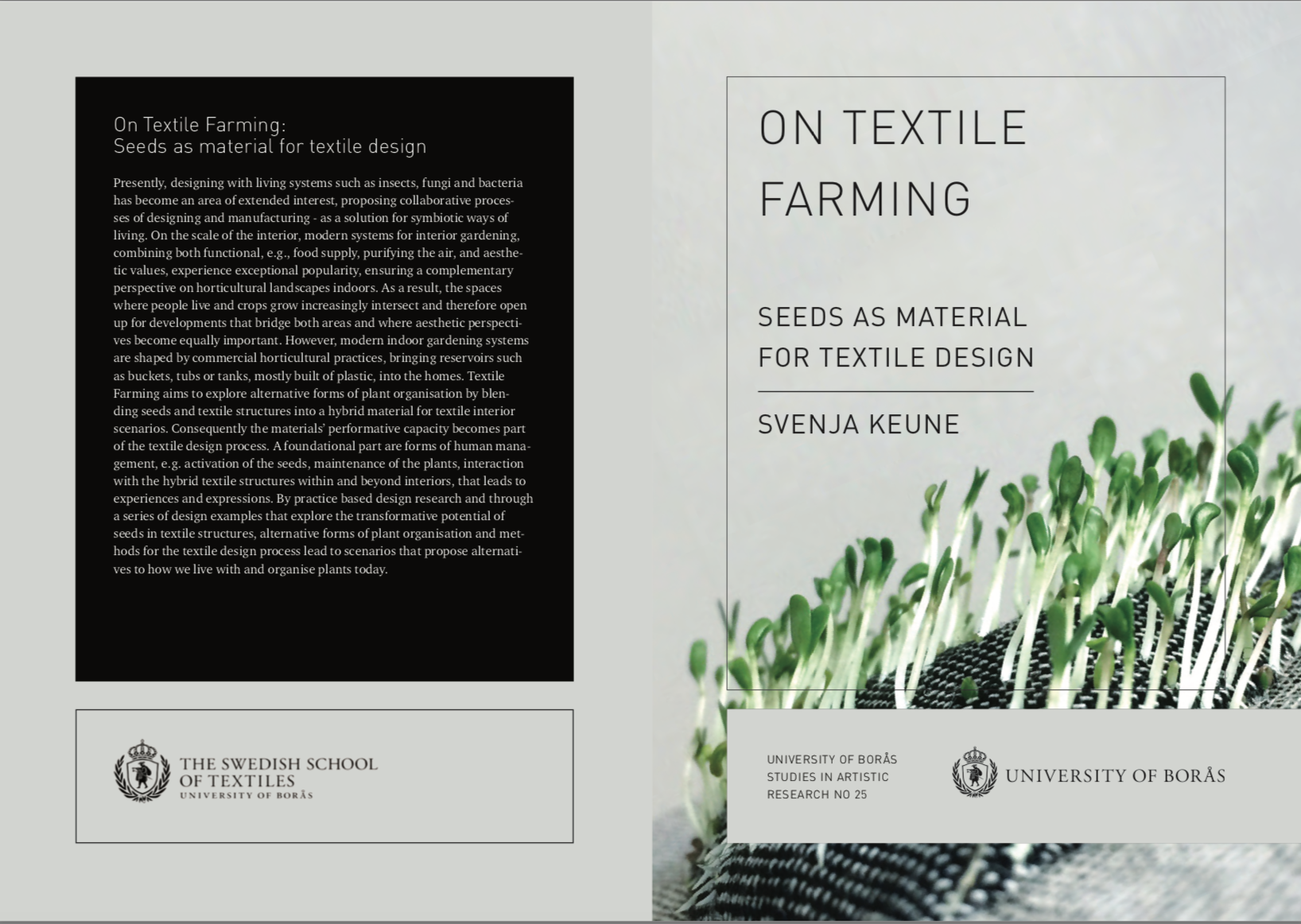Smart Textiles Design Lab Blog at The Swedish School of Textiles
On Textile Farming: Seeds as Material for Textile Design_Svenja Keune

Presently, designing with living systems such as insects, fungi and bacteria has become an area of extended interest, proposing collaborative processes of designing and manufacturing – as a solution for symbiotic ways of living. On the scale of the interior, modern systems for interior gardening, combining both functional, e.g., food supply, purifying the air, and aesthetic values, experience exceptional popularity, ensuring a complementary perspective on horticultural landscapes indoors. As a result, the spaces where people live and crops grow increasingly intersect and therefore open
up for developments that bridge both areas and where aesthetic perspectives become equally important. However, modern indoor gardening systems are shaped by commercial horticultural practices, bringing reservoirs such as buckets, tubs or tanks, mostly built of plastic, into the homes. Textile Farming aims to explore alternative forms of plant organisation by blending seeds and textile structures into a hybrid material for textile interior scenarios. Consequently the materials’ performative capacity becomes part of the textile design process. A foundational part are forms of human management, e.g. activation of the seeds, maintenance of the plants, interaction with the hybrid textile structures within and beyond interiors, that leads to experiences and expressions. By practice based design research and through a series of design examples that explore the transformative potential of seeds in textile structures, alternative forms of plant organisation and methods for the textile design process lead to scenarios that propose alternatives to how we live with and organise plants today.
May 7, 2018 | Filed under Dissertations, News, Publications.

The Swedish School of Textiles
All content © 2025 by Smart Textiles Design Lab Blog